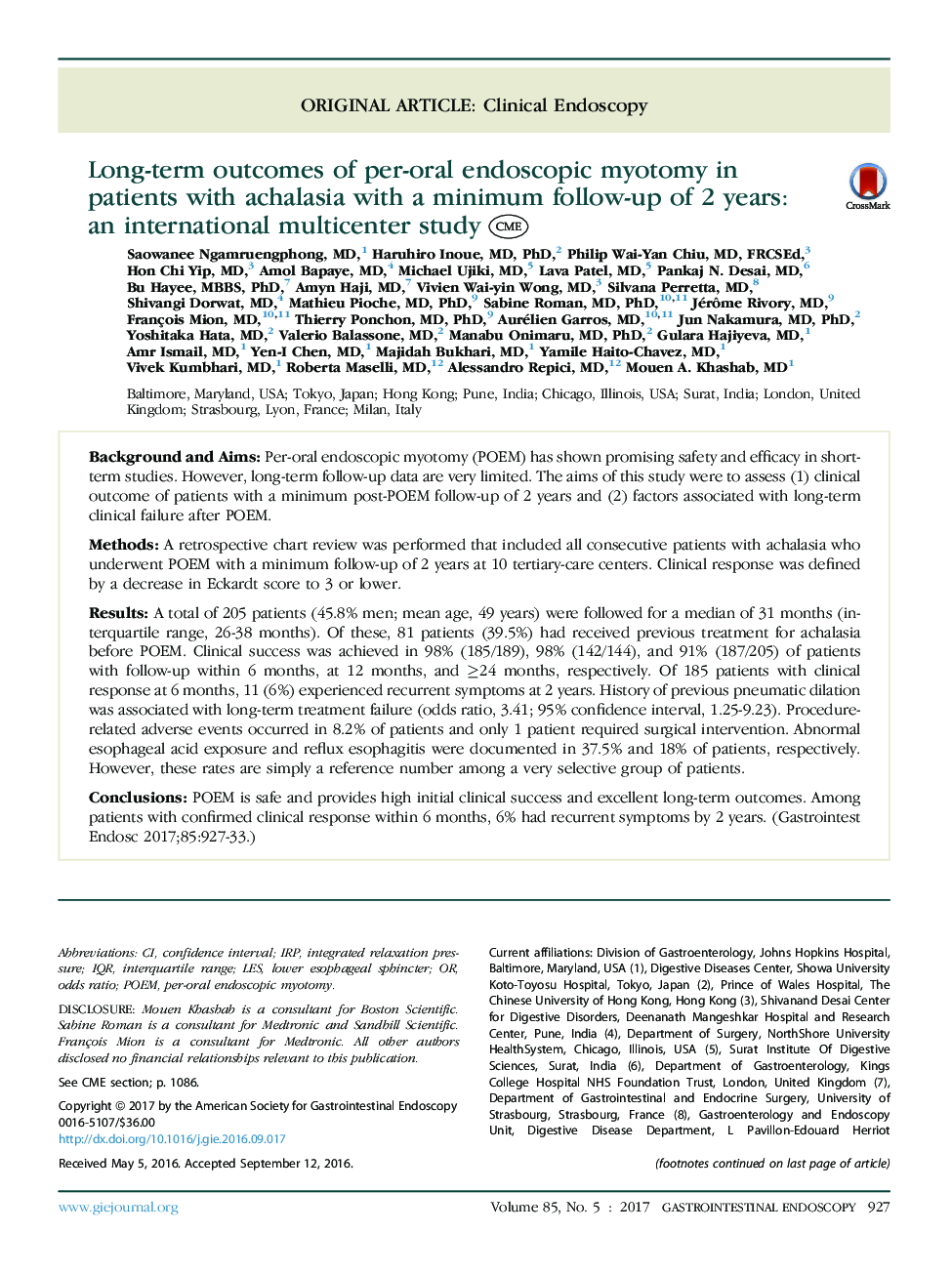| Article ID | Journal | Published Year | Pages | File Type |
|---|---|---|---|---|
| 5659581 | Gastrointestinal Endoscopy | 2017 | 9 Pages |
Background and AimsPer-oral endoscopic myotomy (POEM) has shown promising safety and efficacy in short-term studies. However, long-term follow-up data are very limited. The aims of this study were to assess (1) clinical outcome of patients with a minimum post-POEM follow-up of 2 years and (2) factors associated with long-term clinical failure after POEM.MethodsA retrospective chart review was performed that included all consecutive patients with achalasia who underwent POEM with a minimum follow-up of 2 years at 10 tertiary-care centers. Clinical response was defined by a decrease in Eckardt score to 3 or lower.ResultsA total of 205 patients (45.8% men; mean age, 49 years) were followed for a median of 31 months (interquartile range, 26-38 months). Of these, 81 patients (39.5%) had received previous treatment for achalasia before POEM. Clinical success was achieved in 98% (185/189), 98% (142/144), and 91% (187/205) of patients with follow-up within 6 months, at 12 months, and â¥24 months, respectively. Of 185 patients with clinical response at 6 months, 11 (6%) experienced recurrent symptoms at 2 years. History of previous pneumatic dilation was associated with long-term treatment failure (odds ratio, 3.41; 95% confidence interval, 1.25-9.23). Procedure-related adverse events occurred in 8.2% of patients and only 1 patient required surgical intervention. Abnormal esophageal acid exposure and reflux esophagitis were documented in 37.5% and 18% of patients, respectively. However, these rates are simply a reference number among a very selective group of patients.ConclusionsPOEM is safe and provides high initial clinical success and excellent long-term outcomes. Among patients with confirmed clinical response within 6 months, 6% had recurrent symptoms by 2 years.
